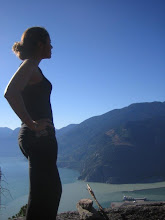As the green movement reveals its reach, proponents prove that no aspect of life is without an outlet for applied sustainability. Take green burial, in which a casket is replaced with a biodegradable box or shroud that allows a body to decompose freely.
So what does a green burial look like? Picture the following setting: A body completely wrapped in quite a few yards of cloth, with four friends and family members on hand to cautiously lower it into the ground. There is no vault, no liner, and no embalming chemicals. Embalming fluid contains toxic chemicals -- including up to three gallons of formaldehyde -- that can seep into soil and ground water. What few people may know is that embalming is unnecessary, and it’s rarely required by law.
Soon the plain grave is covered with Earth, with a knoll of dirt on top to compensate for settling that will happen over time. There is no marker here, just native foliage. The backdrop doesn’t look so much like a cemetery, but more like a nature conservancy.
A similar wood casket is buried in a traditional cemetery. Instead of a cement vault that surrounds it, a liner goes on top. Similar to an upside-down shoebox, there is no bottom, and the casket, sitting directly on the dirt, decomposes in time, along with the body inside.
As a society, we should look for a means of closure that is more natural. There is no disgrace in surrendering our loved ones, and eventually ourselves, to the embrace of the earth. It is a ritual of reunion between body and soil, not to be restrained by artificial preservation. This is, perhaps, the ultimate gesture of reuse and renewal.
Sustainability, it seems, can be practiced in all aspects of one’s life, including death.
skip to main |
skip to sidebar


Cod, A biography of the fish that changed the world. By, Mark Kurlansky

This work is licensed under a Creative Commons Attribution-Noncommercial-No Derivative Works 3.0 Unported License.
Taking a look at the environmental footprints that we have left behind as well as the road ahead.
Be Green Forever and Recycle Yourself. Guest post by Elizabeth Fournier.
Posted by
Kait
on Wednesday, 7 October 2009
Labels:
Guest post

About Me

- Kait
- I am a 20 something Canadian woman currently living in Vancouver. I am greatly interested in assisting in the search for solutions for global environmental sustainability. It's time we all took personal responsibility for the state of our environment.
Search this blog
Currently Reading...

Cod, A biography of the fish that changed the world. By, Mark Kurlansky
Books of '11
- • Four Fish. By, Paul Greenberg
- • Environmental Law. By, Jamie Benidicson
- • Long Term Value Strategy for the Canadian Lobster Industry. By, Gardner Pinfold Market Research Associates
Books of '10
- • Fisheries Economics an introduction. By, Stephen Cunningham, Michael R. Dunn, and David Whitmarsh
- • Tar Sands. Dirty Oil and the Future of a Continent. By, Andrew Nikiforuk
- • Guns, Germs, and Steel. The Fates of Human Societies. By, Jared Diamond.
- • The End of Food. By, Paul Roberts
Books of '09
- • Silent Spring. By, Rachel Carson
- • Sea Sick, the Global Ocean in Crisis. By, Alanna Mitchell
- • The world without us. By, Alan Weisman
- • Bottomfeeder. How to eat ethically in a world of vanashing seafood. By, Taras Grescoe
- • Life in 2030: Exploring a Sustainable Future for Canada. By, John B. Robinson
- • The Whale Warriors. The battle at the bottom of the world to save the planet's largest mammals. By, Peter Heller
- • In a perfect ocean. The state of fisheries and ecosystems in the north atlantic ocean. By, Daniel Pauly and Jay Maclean
- • The end of the line. How overfishing is changing the world and what we eat. By, Charles Clover
Favorite Posts
Labels
- climate change (5)
- coast (1)
- Dear Korea... (2)
- energy (2)
- finning (2)
- fish (10)
- fisheries (9)
- garbage island (2)
- green building (1)
- Guest post (2)
- hypoxia (1)
- Interesting people (5)
- longlines (1)
- movies (1)
- ocean (19)
- organic (1)
- paper (3)
- plastic (4)
- recycling (6)
- seafood (6)
- shark (2)
- water (4)
- whales (1)
Blog Roll
Followers
Visitors
This work is licensed under a Creative Commons Attribution-Noncommercial-No Derivative Works 3.0 Unported License.


1 comments:
hm, interesting. how about cremation? can that be harmful to the environment? are bodies normally embalmed before cremation?
Post a Comment